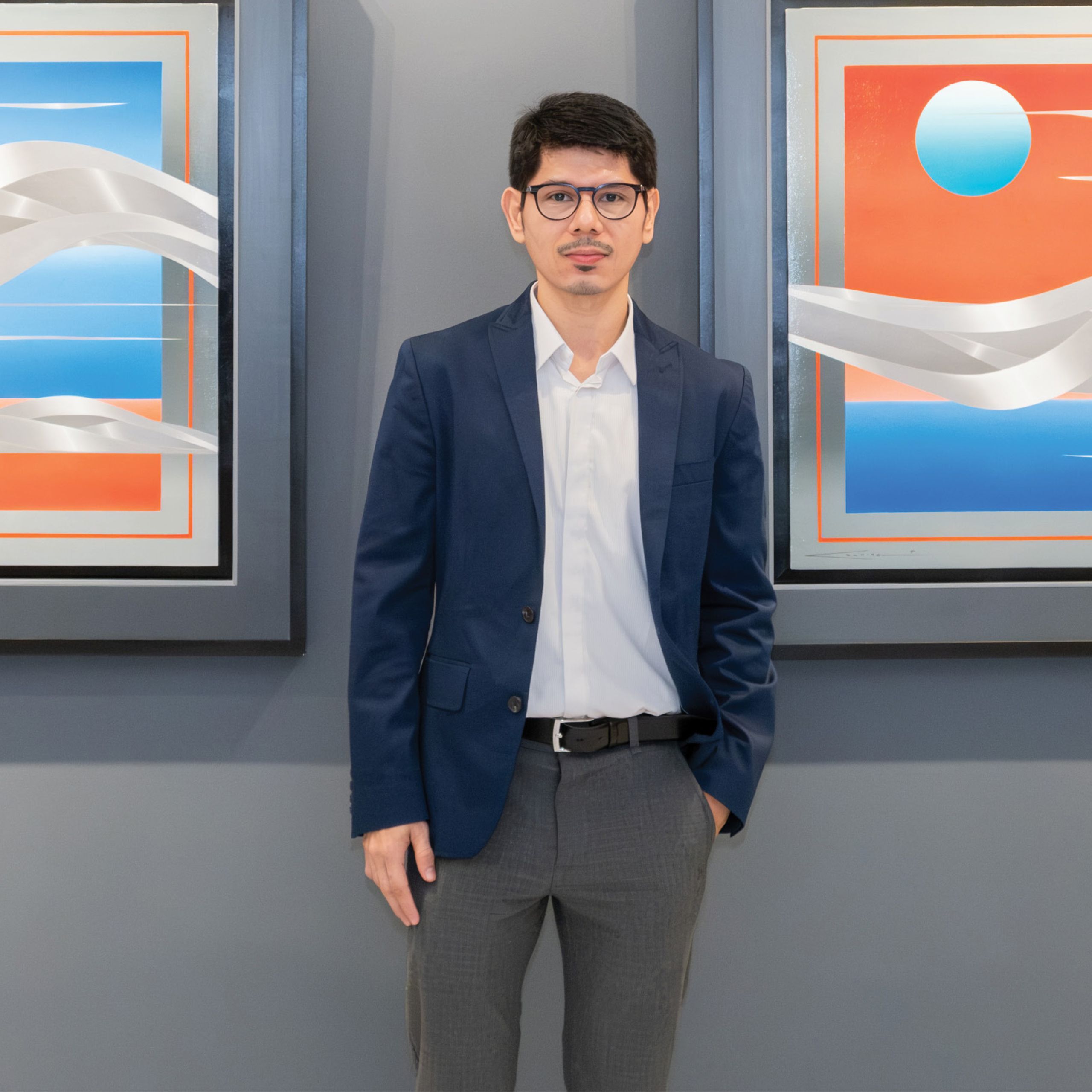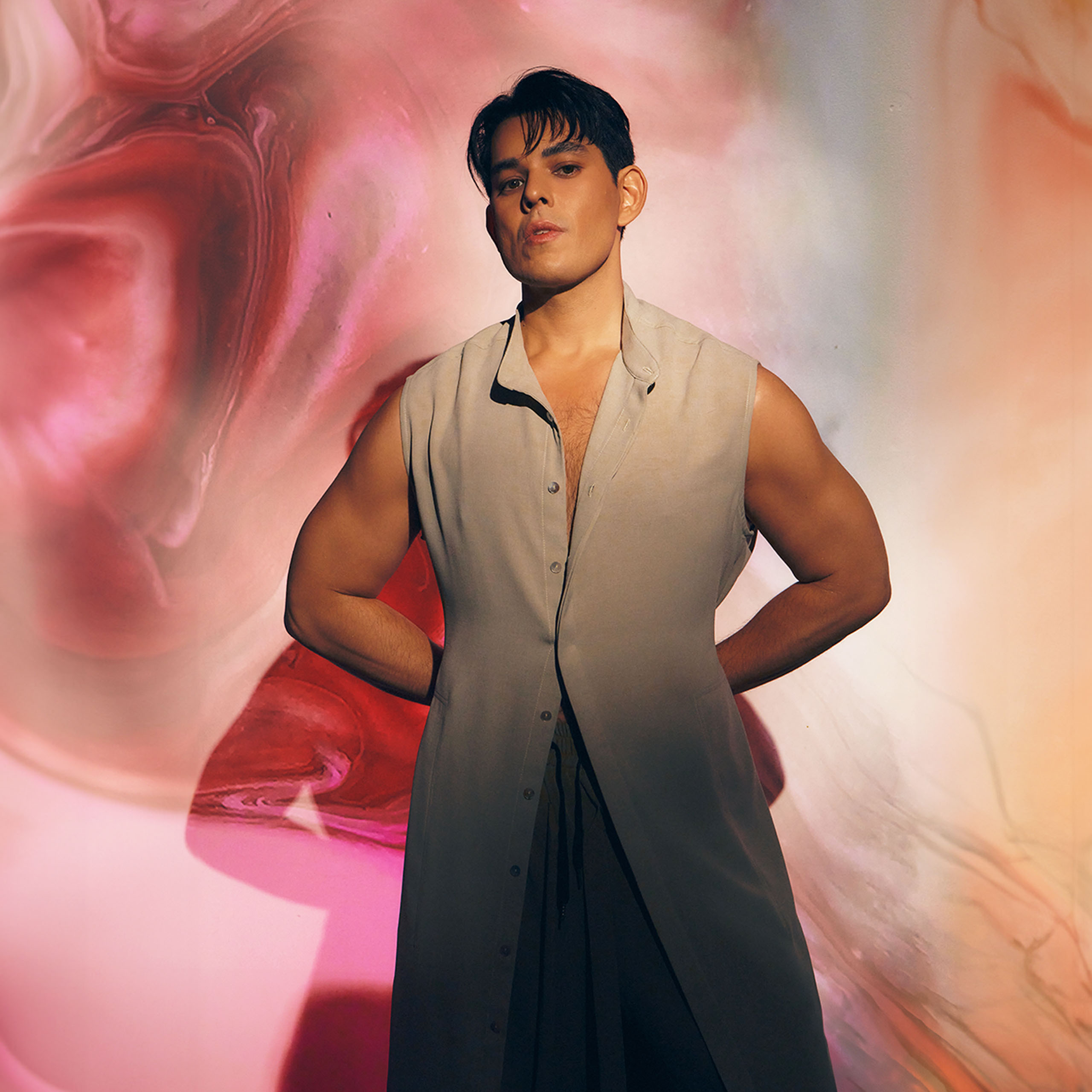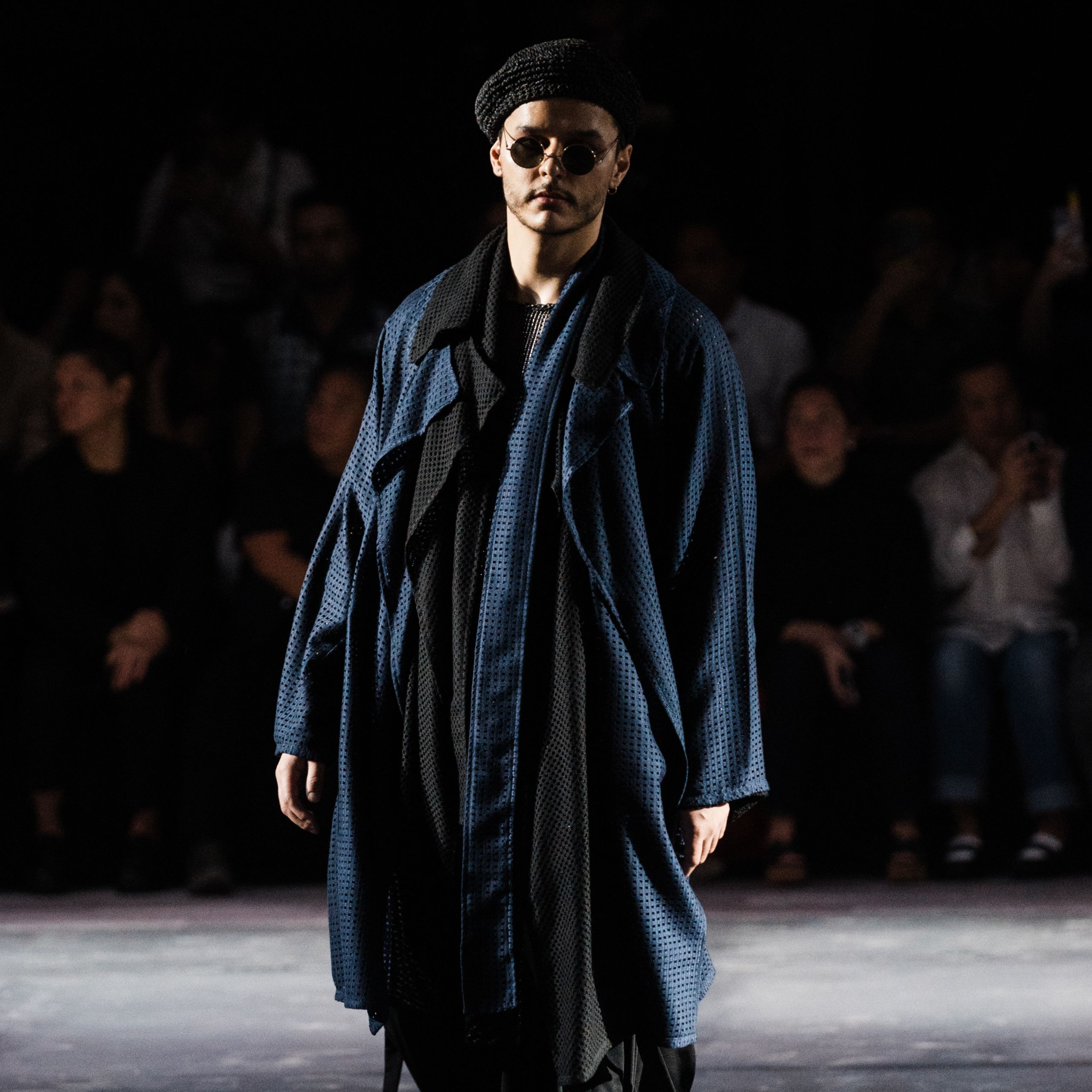In an exhibit for his new series, Traverse, Marco Coching lets MEGA know his aspiration to paint his own identity in the art world outside of his grandfather, National Artist Francisco V. Coching
When one steps into the revered chambers of artistic lineage, etched in their respective DNA, there’s a sense of reverence in the air. Each breath feels charged with the weight of endeavor, imbuing the atmosphere with creativity passed down through generations. It’s almost like breath itself traverses. Departing from traditional storytelling, Marco Coching’s new series, Traverse, plunges viewers into augmented landscapes of the metaphysical, a space where reality merges with imagination. The grandson of National Artist of Visual Arts Francisco V. Coching, referred to as the “King of Komiks”, becomes not only a bearer of his family’s esteemed legacy, but also a torchbearer of innovation.
RELATED: Kristian Somera Finds the Poetry of Existence in His Paintings
Flowing through Waves
“My new collection is called Traverse,” Marco Coching begins, his voice as adventurous as a balloon caught in a playful breeze. “Yung trademark ko talaga ay metallic waves—the sky meets the sea.” The artist paints his vision where the boundaries between earth and sky blur into a duet of color and form, where the horizon serves not as a sharp divide, but as a line highlighting distinct elements. It’s a canvas where each component, when brought together, forms a cohesive whole, yet retains its luminance even when separated.
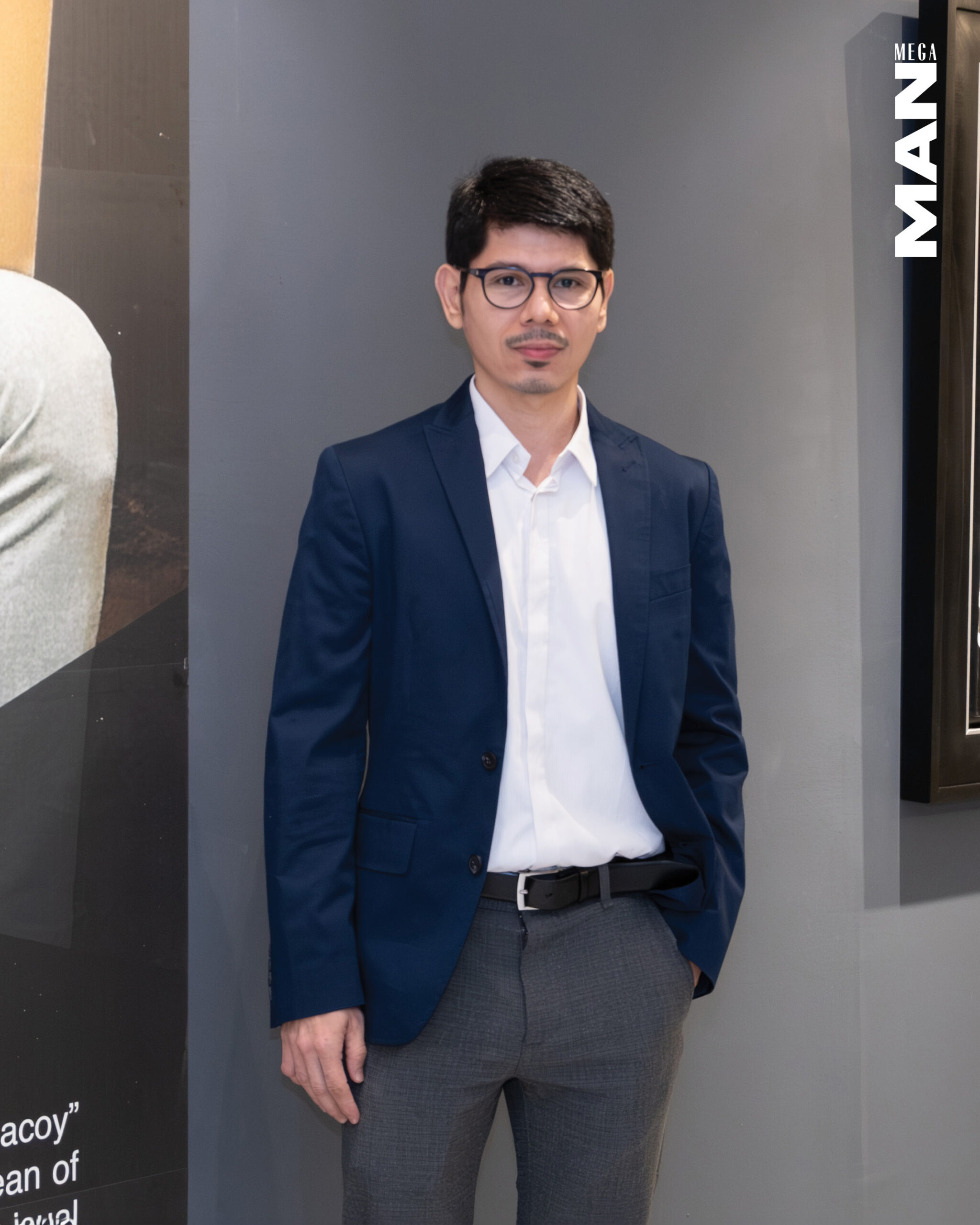
Yet, why Traverse? Is there a method to this journey, a purpose of this relentless search? “Yung waves ko ay more fluid na siya. I’m still growing. Meron pa akong ideas na pwedeng gawin.” His response carries a sense of evolution, portraying his ideas as continuous in their exploration and elevating with its expansion. It’s a dynamic nature of creation, where new ideas and techniques propel the artist forward on a changing path of discovery—an essential element when one wants to stand on their own. Coching finds himself flowing through waves.
Courage, Conviction, and Coching
Speaking of standing on their own, we must acknowledge the guiding influence of those who pave the way for our artistic endeavors. Family constructs the bridge and leaves breadcrumbs for us to navigate their world, thereby enriching it with each step we take. For Coching, this guiding figure was his ancestor, Francisco V. Coching. As he discusses the influence of his grandfather, the artist’s response is both poignant and introspective. “Before I used to do illustrating. Pero hindi ko magaya, kasi sobrang galing ng lolo ko,” he reflects.
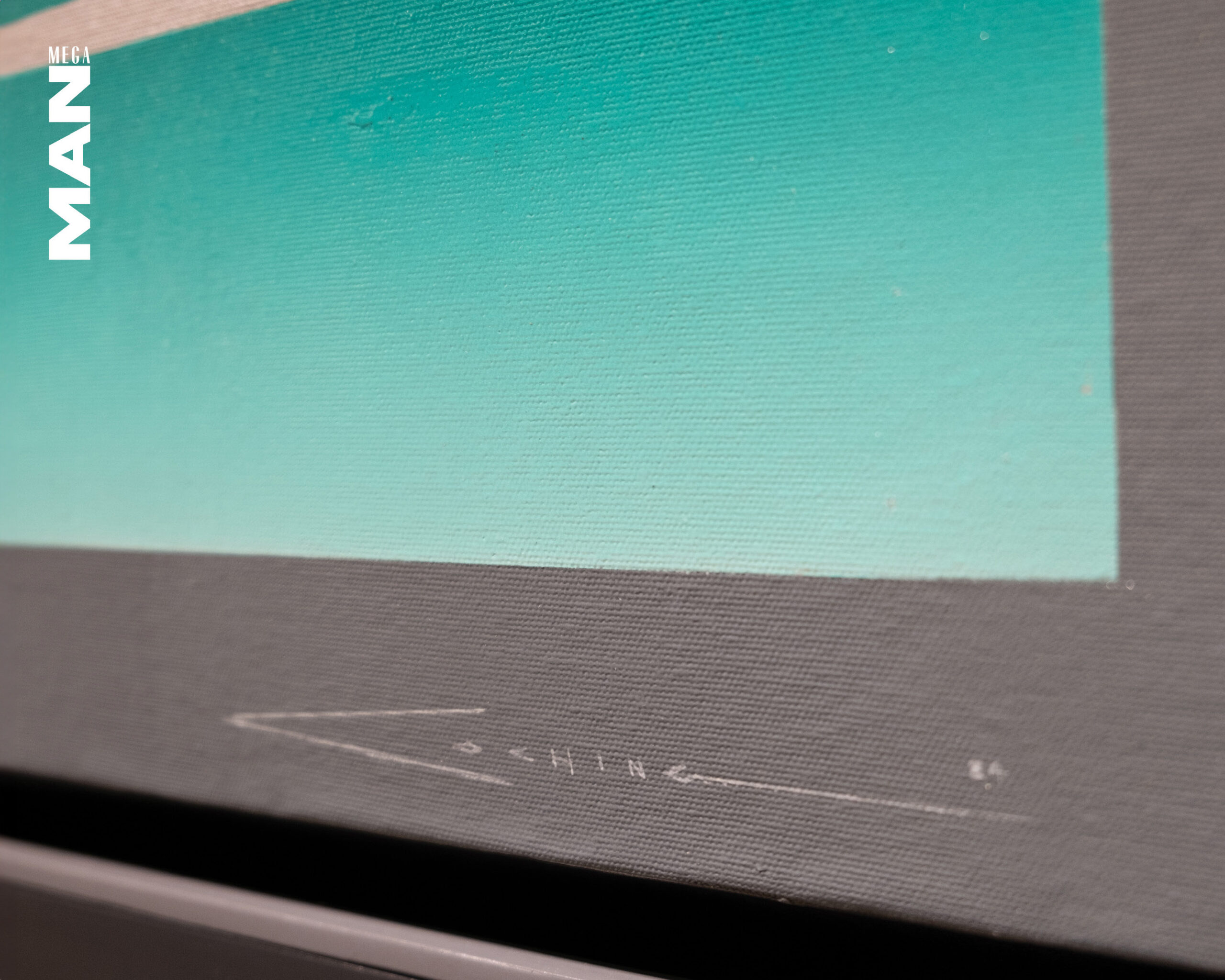
When an artist creates art, they draw upon their experiences to sustain and fulfill their expressions of identity. After all, the uniqueness of art lies in its deeply personal nature—it is a reflection of the artist’s innermost thoughts, emotions, and vulnerabilities. In bravely sharing these aspects of themselves with the world, they engage in a profound battle, transforming their struggles and triumphs into powerful works of art. This authenticity imbues their creations with a sense of depth, inviting viewers to connect on a visceral level to their introspection and discovery. In essence, we also influence.
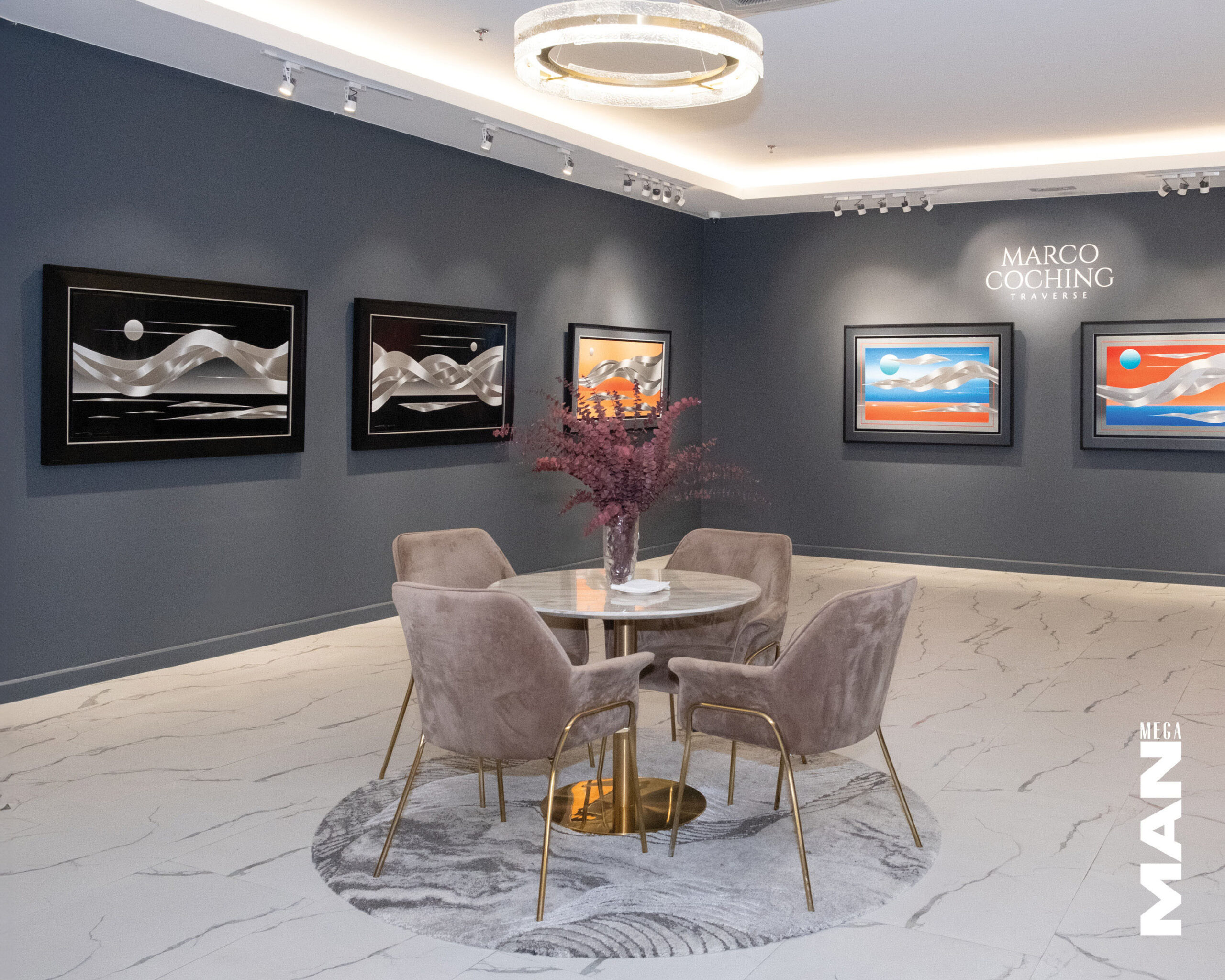
Influence is regarded as a foundational force that is a catalyst: prompting artists to explore new territories, experiment with novel techniques, and challenge established norms. Yet, while external influences may leave their mark on their work, it’s the internal dialogue—the interplay between personal experiences, emotions, and aspirations—that defines their identity.
In truth, no matter the familial ties or shared bloodlines, one cannot replicate another; they breathe, act, feel, and traverse their distinct paths. In some ways, individuals are like islands, complete in their uniqueness yet interconnected through shared experiences, forming an archipelago of ideas—each stroke of paint contributing to the collective with courage and conviction. “Nag-ibang direction, naging abstract painting,” Coching accentuates his transition towards abstract art to his autonomy.
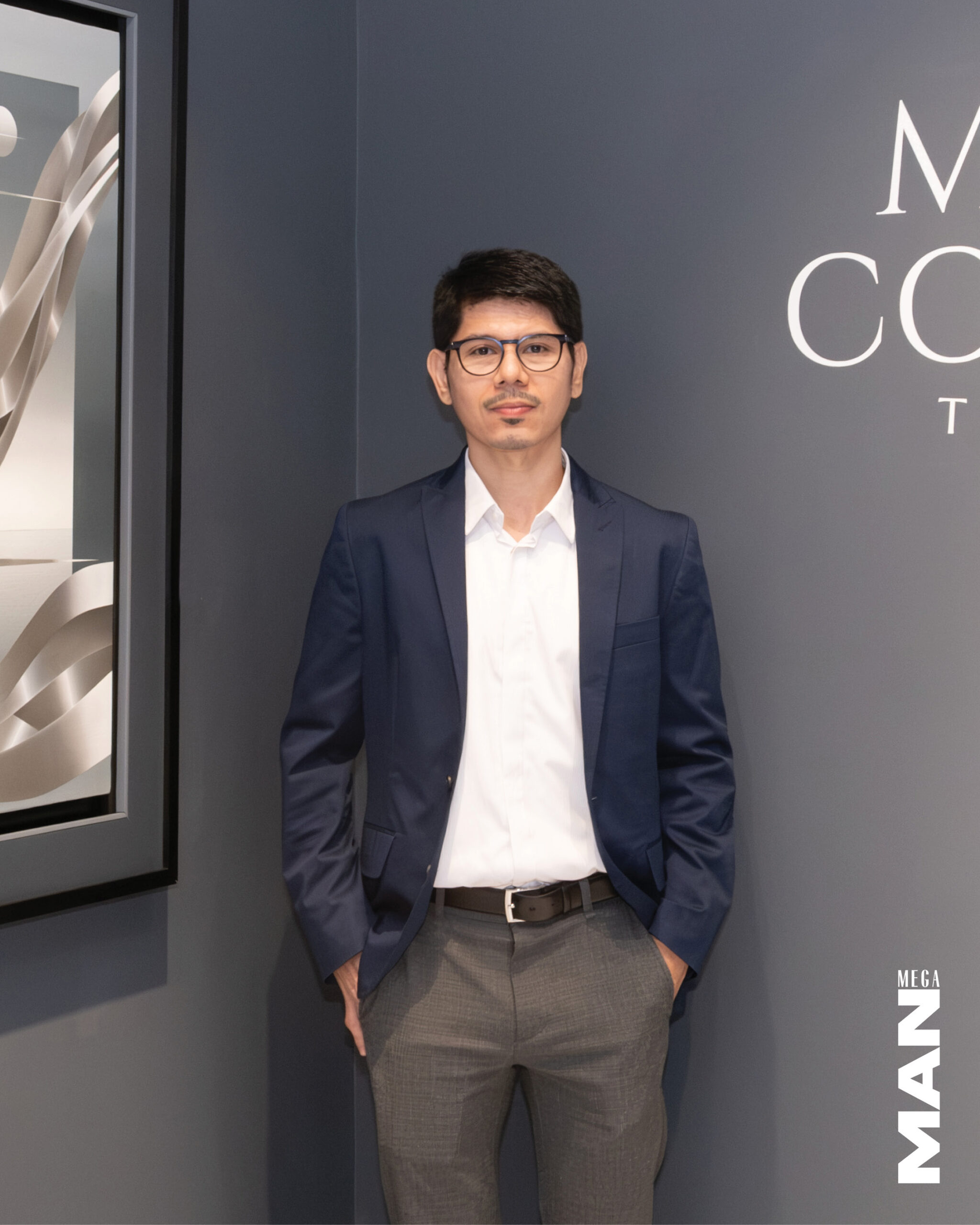
At times, we grapple with a fear of solitude, of standing alone as islands in a vast sea of existence, hesitant to venture into the depths of self-discovery. Yet, it is in these moments of solitude that we have the opportunity to carve our own identities, distinct and unique from those who came before us. It’s essential to recognize that solitude does not equate to loneliness, but rather to strength—the strength to chart our own course, to explore the uncharted territories of our creativity, and to adopt the fullness of our individuality. For Coching, his island is the formation of an artist separate from his grandfather.
The Spirit of His Lineage
Abstract ideas serve as the cornerstone of Coching’s artistic endeavors, enriching his works and allowing them to flourish independently. Whether with oil, aluminum, or matte, artists like Coching have the power to construct entire worlds from their imagination. When created effectively, these creations have an intense impact on viewers. Indeed, the core of his art arises from the complex relationship of colors and forms, generating emotions and prompting reflection in people who see it. In this sense, Coching and artists like him raise the act of creating into a spiritual experience.
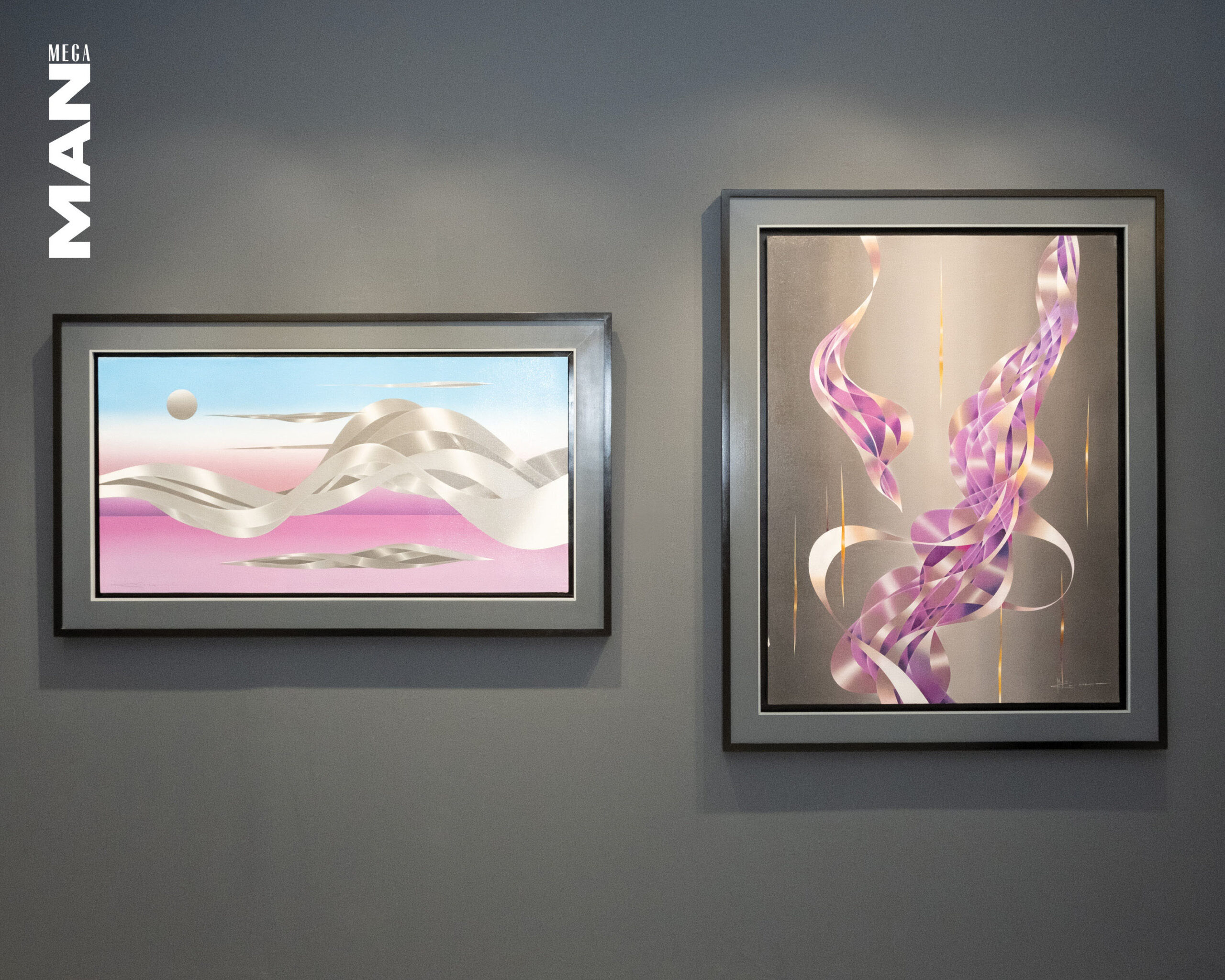
“I want them to recognize na wala ako katulad, na ako lang meron ganito,” Coching declares. “Before, may sinasabi sa akin na gaya-gaya lang ako. Medyo tumatak sa akin na kailangan iba yung gawa ko.” He reflects on past criticisms that his work was derivative, which left a lasting impression on him and fueled his determination to create something distinctively his own.
The discourse surrounding accusations of imitation spurred him to chart a unique course. “Hanggang ngayon, tumatak sa akin ‘yun,” Coching acknowledges. “Nasaktan ako noon, so I used it as motivation to work harder, to discover new ideas, bagong techniques.” It’s this critical engagement, often originating from family, that cuts the deepest—for a child to look up to their creator is akin to asking God if they were ever worthy, only to feel overlooked. “Lumabas naman siya.”
But as God is also a creator, we are confronted with the immutable reality of our existence—the intertwining of divine inspiration and human endeavor, the line between creation and creator. It is a moment of revelation, where the earthly and the divine come together in meditation, and we are left to ponder the mysteries of our existence. We become God, and we cannot be compared to others.
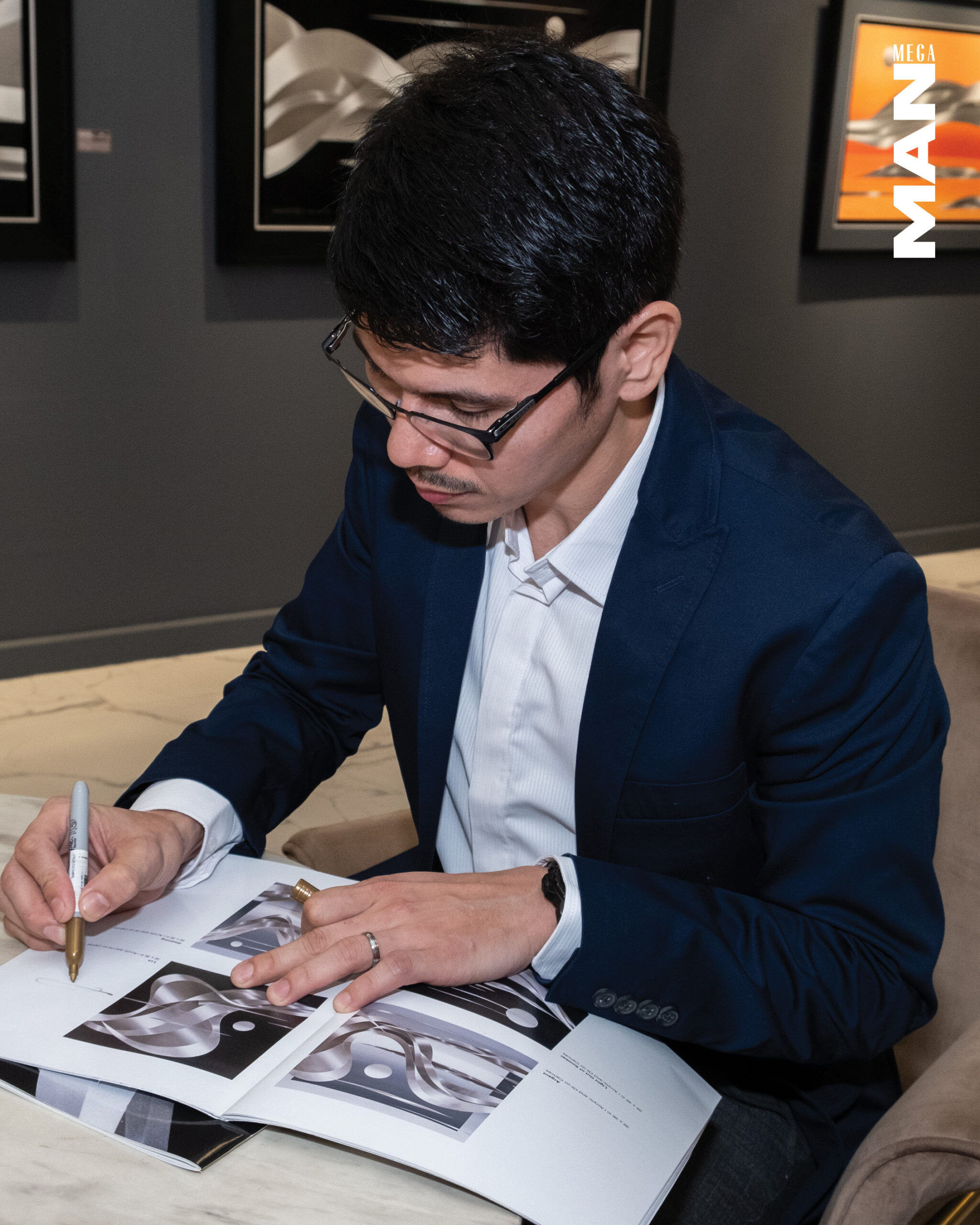
“The bloodline is still there. The legacy of my grandfather is ongoing, and I hope it doesn’t stop. We’re proud of Marco; he’s evolving, and getting better and better. His works are sold out in one exhibit. People are starting to notice his art,” his brother Francisco Coching III affirms, encapsulating the enduring spirit of their artistic lineage and Coching’s rising prominence.
His father Arnel Coching remarks, “My dad, of course, he’s a National Artist, one of the best, and here comes Marco—his style is modern art, he projects something different. He has something deeper. Marco grew up with my dad. Siguro, he picked up something. He’s evolving,” his father acknowledges his son’s unique voice and the influence of their family’s rich line. After all, there’s another artist in the family, one who can further sculpt his place in the Coching line.
The Whole Sea
Navigating the maze of identity, one must sidestep the snares of comparison and unearth a niche as distinct as a wave. Is Coching his own wave? “Actually, yes,” Coching proclaims, traversing from galleries to collectors, who recognize his strengths. He embraces his identity beyond the shadows of his legacy. “Kailangan ko pag-galingan. Kailangan ko magimprove pa,” he acknowledges. Like countless artists, he understands the necessity of growth, but unlike many, he actively pursues it.
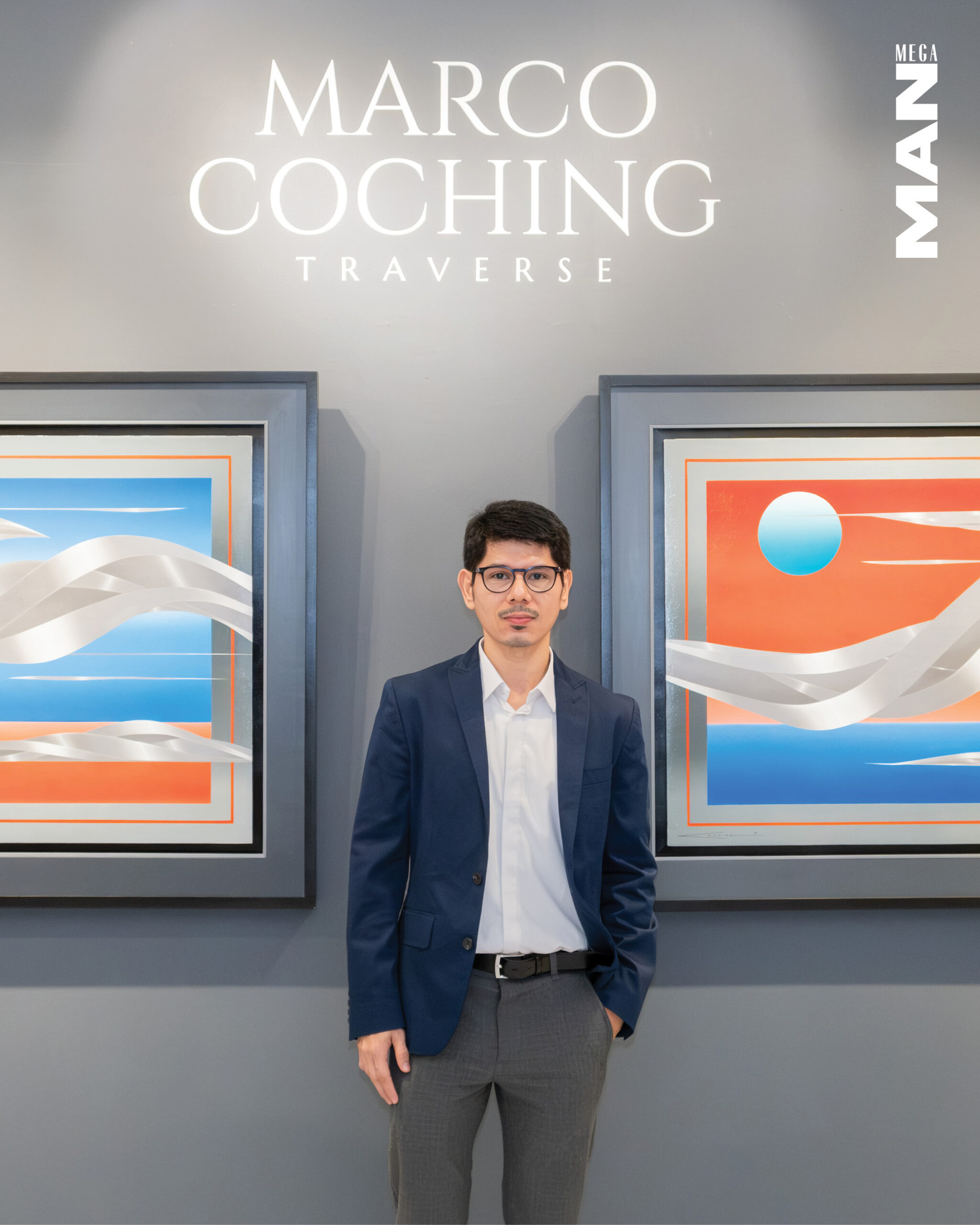
RELATED: How Miguel Romulo’s Simple Love for Art Became a Collection
What lies ahead for Marco Coching? “I want to be more recognized,” he declares. When people say they want to create art, believe them. When artists say they don’t want to be famous because of it, they’re lying. “Mas makikita pa nila bagong works ko. Gagawa ko pa ng something new.” With confidence, he treads across drops of water, each step a ripple in the undying currents of creativity. As the tide of recognition swells, he remains anchored in his passion, poised to reveal even greater depths of his abilities. Maybe he’s not a wave, but the whole sea.
“Traverse” by Marco Coching will run until April 2, 2024, located at Galerie Joaquin Rockwell at Power Plant Mall
Photography GALERIE JOAQUIN
